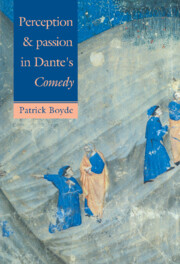Book contents
- Frontmatter
- Contents
- Preface
- PART ONE Coming to terms with Aristotle
- PART TWO The operations of the sensitive soul in man
- PART THREE The operations of the rational soul
- 9 Self-direction: the powers of the mind
- 10 Aspects of human freedom
- PART FOUR Combined operations
- Notes
- Select bibliography
- Index of Latin terms
- Index of longer quotations
- General index
9 - Self-direction: the powers of the mind
Published online by Cambridge University Press: 14 October 2009
- Frontmatter
- Contents
- Preface
- PART ONE Coming to terms with Aristotle
- PART TWO The operations of the sensitive soul in man
- PART THREE The operations of the rational soul
- 9 Self-direction: the powers of the mind
- 10 Aspects of human freedom
- PART FOUR Combined operations
- Notes
- Select bibliography
- Index of Latin terms
- Index of longer quotations
- General index
Summary
Corpora seipsa moventia et seipsa dirigentia
We saw in part one that there is a fundamental difference between the movement of a stone, as flung by a boy at a passing seagull, and the movement made by a gull in order to avoid such a missile. The first body receives its impetus from without, ‘by violence’. The second finds its motive force within itself, ‘by nature’: and the gull constitutes a representative example of a ‘self-moving body’, a corpus seipsum movens.
We also recognised that, at another level of analysis, the self-caused movements of any animal were assumed to be governed by factors beyond its control. It owes its existence to a specific form or vital principle (anima) which confers certain limited powers and certain instinctive needs and appetites. However complex the mechanism of perception, estimation, passion and locomotion may prove to be, an animal cannot not react in a predetermined way to the external bodies it chances to encounter. It cannot ordinarily make a ‘false move’; but it is ‘more acted upon than acting’.
Now, it will be obvious from everything that has been said that, for Dante, the crucial divide lay not between animate and inanimate bodies, but between all other animate bodies and man. As a Christian, as a citizen of a self-governing commune, and as an Aristotelian, he accepted that human beings are genuinely ‘masters of their own actions’.
- Type
- Chapter
- Information
- Perception and Passion in Dante's Comedy , pp. 173 - 192Publisher: Cambridge University PressPrint publication year: 1993



